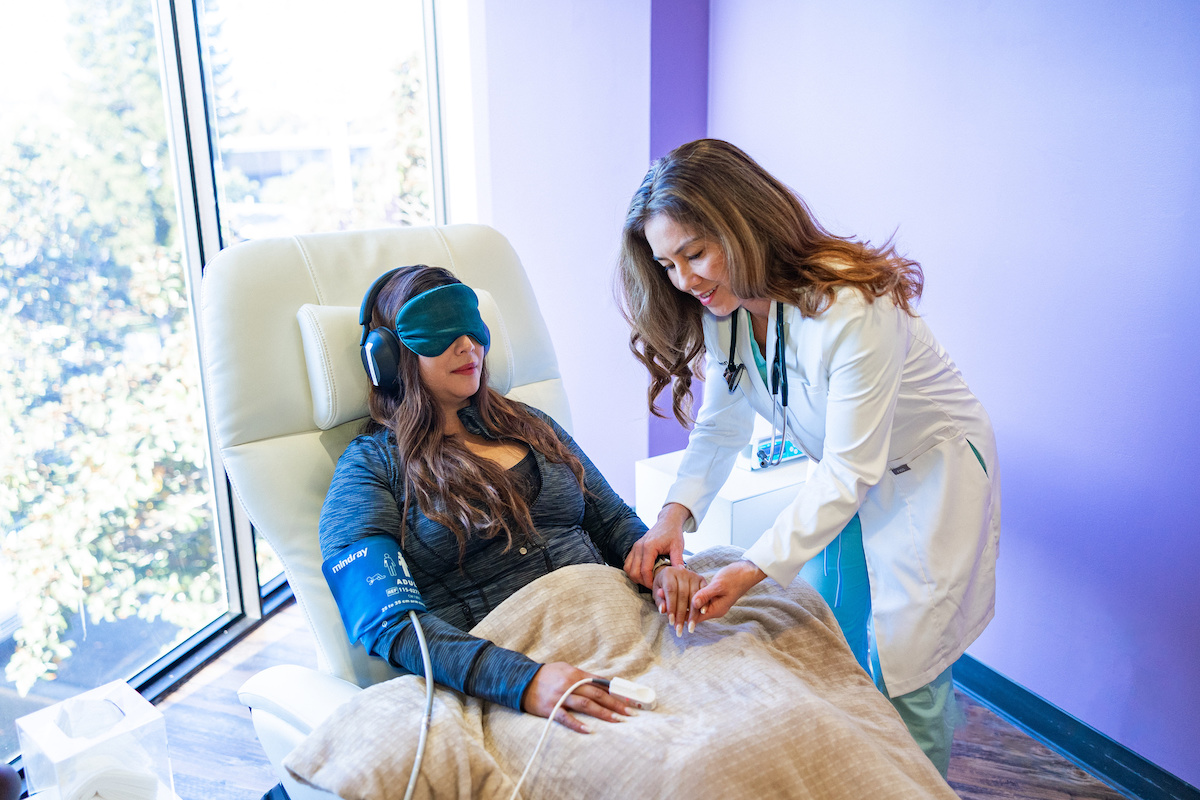If you’ve completed a full series of IV ketamine treatments, you already know how powerful and life-changing the results can be. But here’s something many people don’t realize: without ongoing care, the benefits often fade surprisingly quickly. That’s why maintenance—or “booster” infusions—are such an important part of the healing journey.
Why the Initial 6 Treatments?
Most patients begin with a series of 6 infusions over 2–3 weeks. This isn’t an arbitrary number. Research shows that multiple infusions given close together create a more durable and consistent antidepressant and anti-anxiety effect than a single infusion alone.
- In one landmark study, patients who received 6 infusions had significantly longer-lasting relief compared to those who received just one (Wilkinson et al., 2018).
- The repeated dosing helps the brain make structural and functional changes—often described as “rewiring” or boosting neuroplasticity—that support sustained improvement.
- Simply put: the induction series lays the foundation. It helps the benefits stick and gives us something to build upon with maintenance.
Why Maintenance is Needed After the Series
Even after 6 treatments, ketamine’s effects are not permanent. Clinical studies consistently show that while ketamine can create rapid improvement in depression, anxiety, and other mood disorders, those improvements often fade if treatment stops:
- Relapse happens quickly without follow-up. Most patients relapse within 2–4 weeks after stopping treatment (American Journal of Psychiatry). In some studies, the median time to relapse was just 18 days.
- Up to 80% of patients relapse within one month if no maintenance care is given (systematic review, Psychological Medicine).
- Maintenance treatments significantly extend wellness. For patients who continue with ongoing infusions or intranasal esketamine, the risk of relapse is cut nearly in half (SUSTAIN-1 Trial, JAMA Psychiatry).
So How Often Should You Come Back for Maintenance?
Here’s the honest answer: it depends on you. There’s no single schedule that works for everyone, because every brain—and every healing journey—is unique. But here’s what the research and real-world experience suggest:
- Early Maintenance (first few months): Many patients benefit from boosters every 1–2 weeks after their initial series.
- Longer-Term Maintenance: Over time, as stability improves, most patients taper to every 3–4 weeks. Real-world studies, including research from the VA, show patients often stretch the interval between treatments while maintaining benefit.
- Flexibility is Key: If symptoms begin to creep back, a booster sooner can help reset balance. If you’re feeling strong, you may be able to extend time between visits.
At Golden Afternoon, we don’t believe in rigid schedules. Every patient receives a customized maintenance plan from Dr. Jenn, based on their unique response, goals, and lifestyle. Our goal is to find the least frequent schedule possible that still keeps you feeling well.
Why Golden Afternoon’s Approach is Different
Many clinics stick to cookie-cutter timetables. We do things differently:
- Individualized Plans: Dr. Jenn works with you to design a schedule tailored to your needs.
- Holistic Support: We look at your whole wellness picture, not just symptom scores.
- Long-Term Focus: Our aim is sustainable healing—not just short-term relief.
Special Support for Our Patients
To make maintenance as accessible as possible, we’re offering:
- 10% off all maintenance visits (regularly $600 each) when you sign up for a plan until September 30. 2025
Take the Next Step
If you’ve completed your initial course of treatments, don’t let your hard-earned progress fade. Science shows maintenance makes all the difference. Let’s build on your foundation together.
👉 Book Your Booster at Golden Afternoon
References:
- Daly EJ et al., JAMA Psychiatry. 2019. Efficacy of esketamine nasal spray plus oral antidepressant for relapse prevention. Link
- Fond G et al., Psychological Medicine. 2021. Ketamine administration in depressive disorders: a systematic review and meta-analysis. Link
- Wilkinson ST et al., Am J Psychiatry. 2017. Continuation and maintenance ketamine treatment for mood disorders. Link
